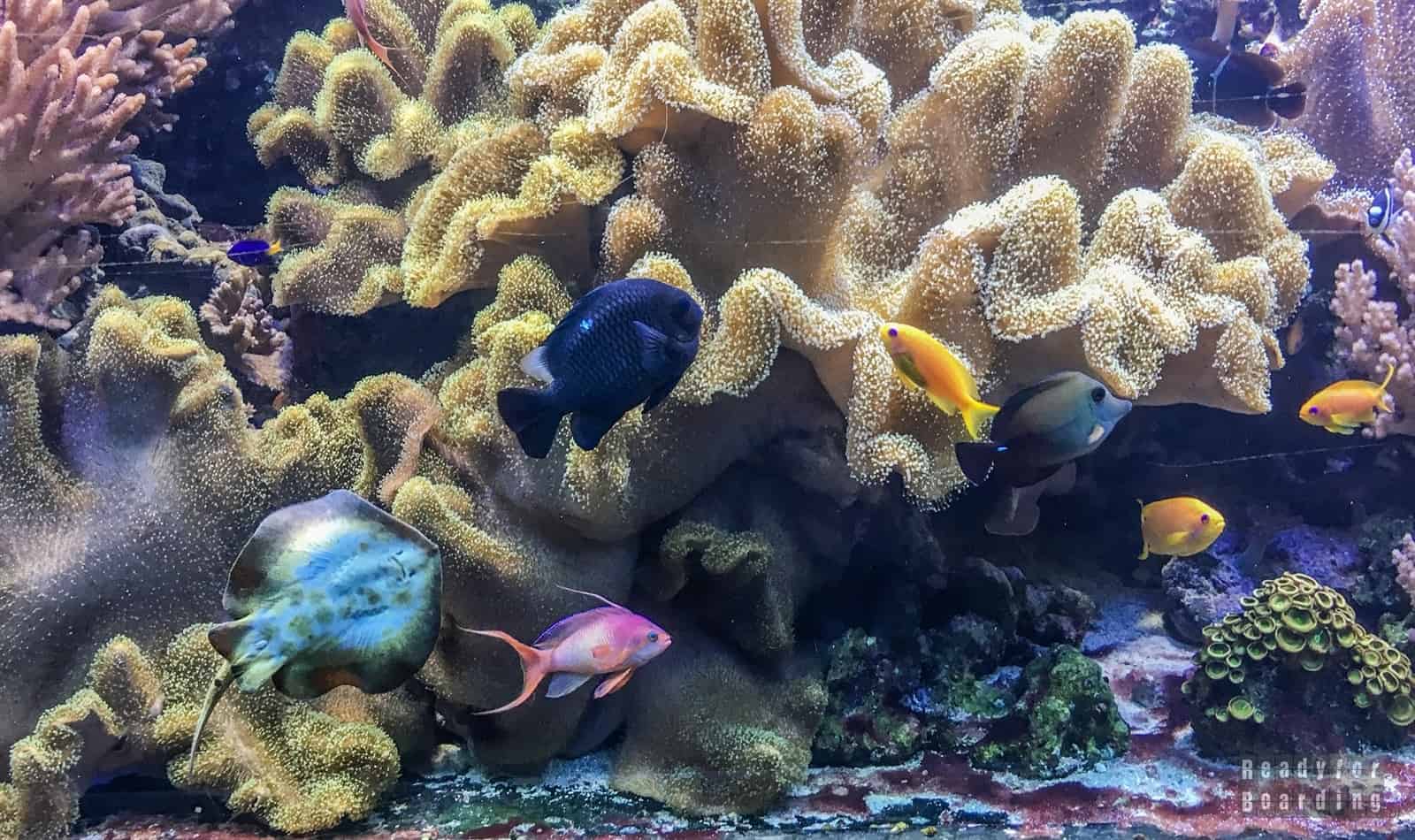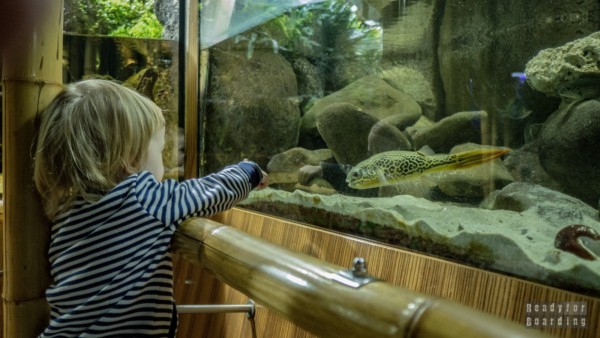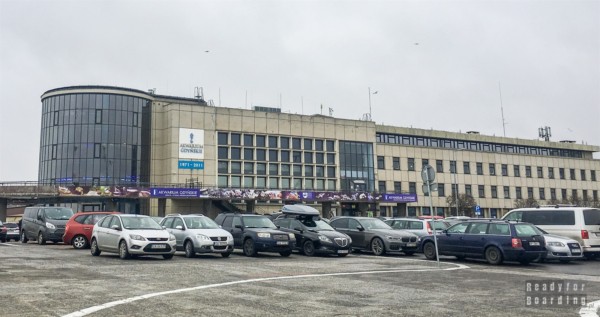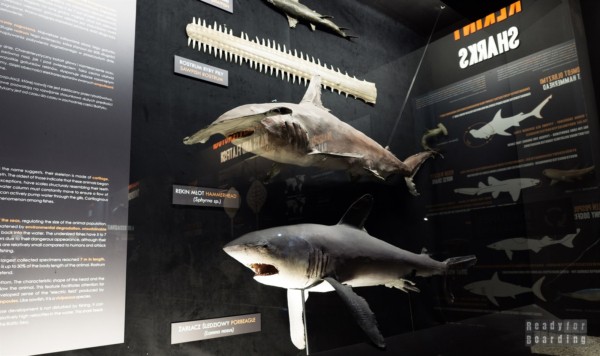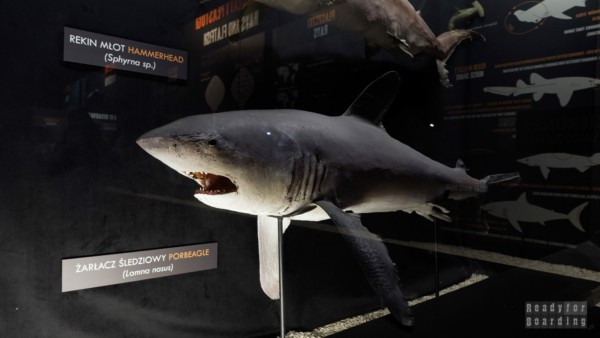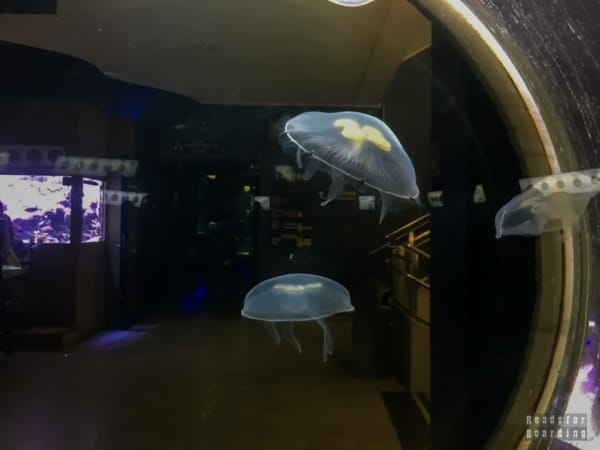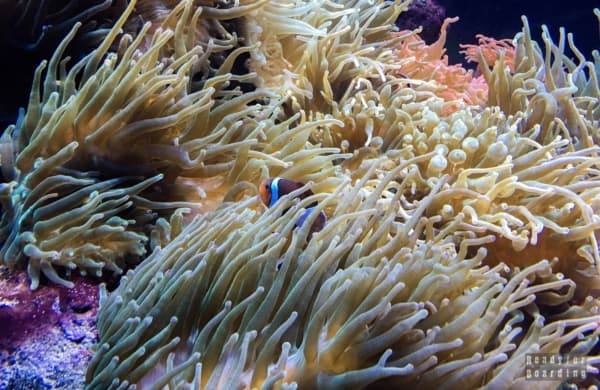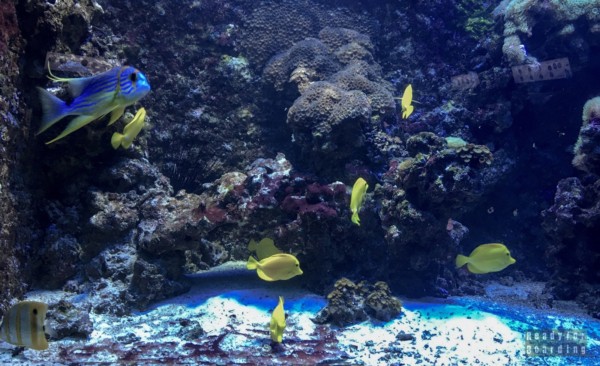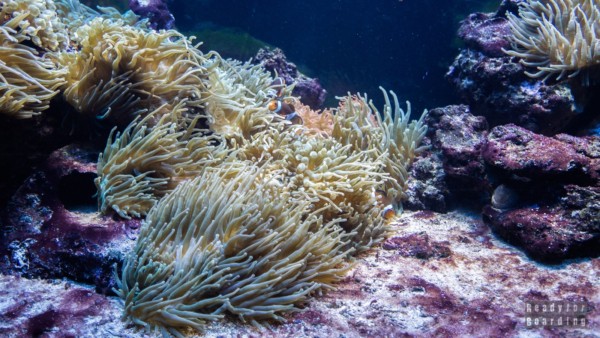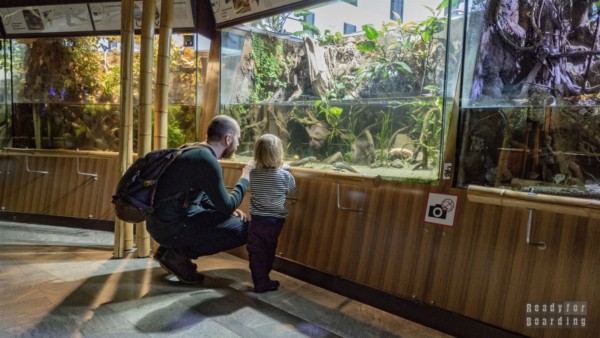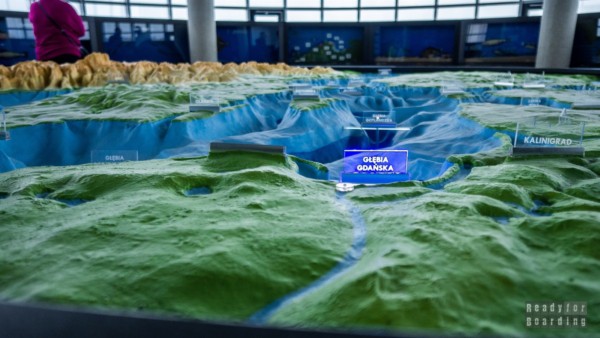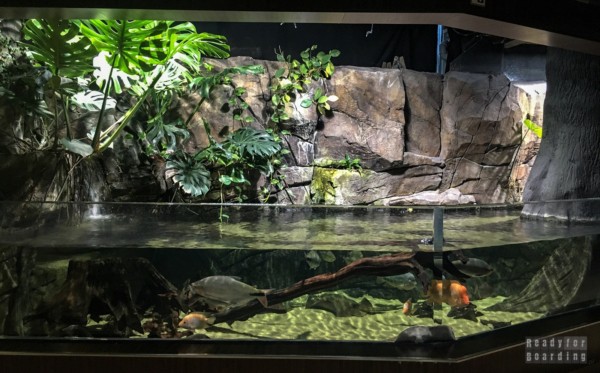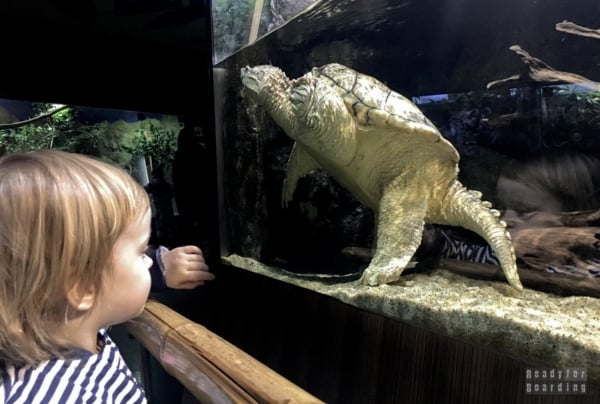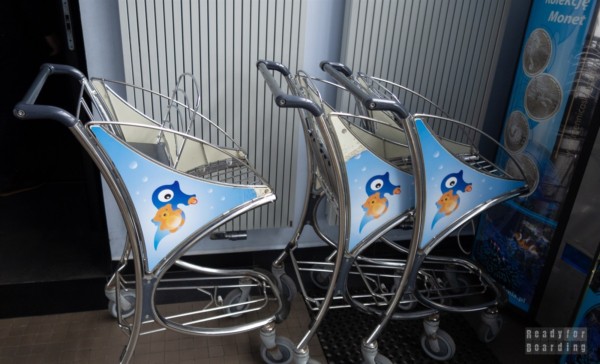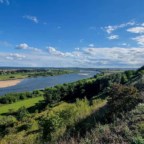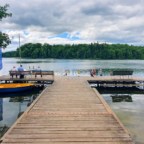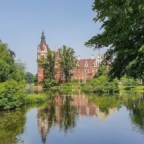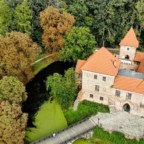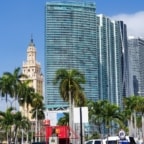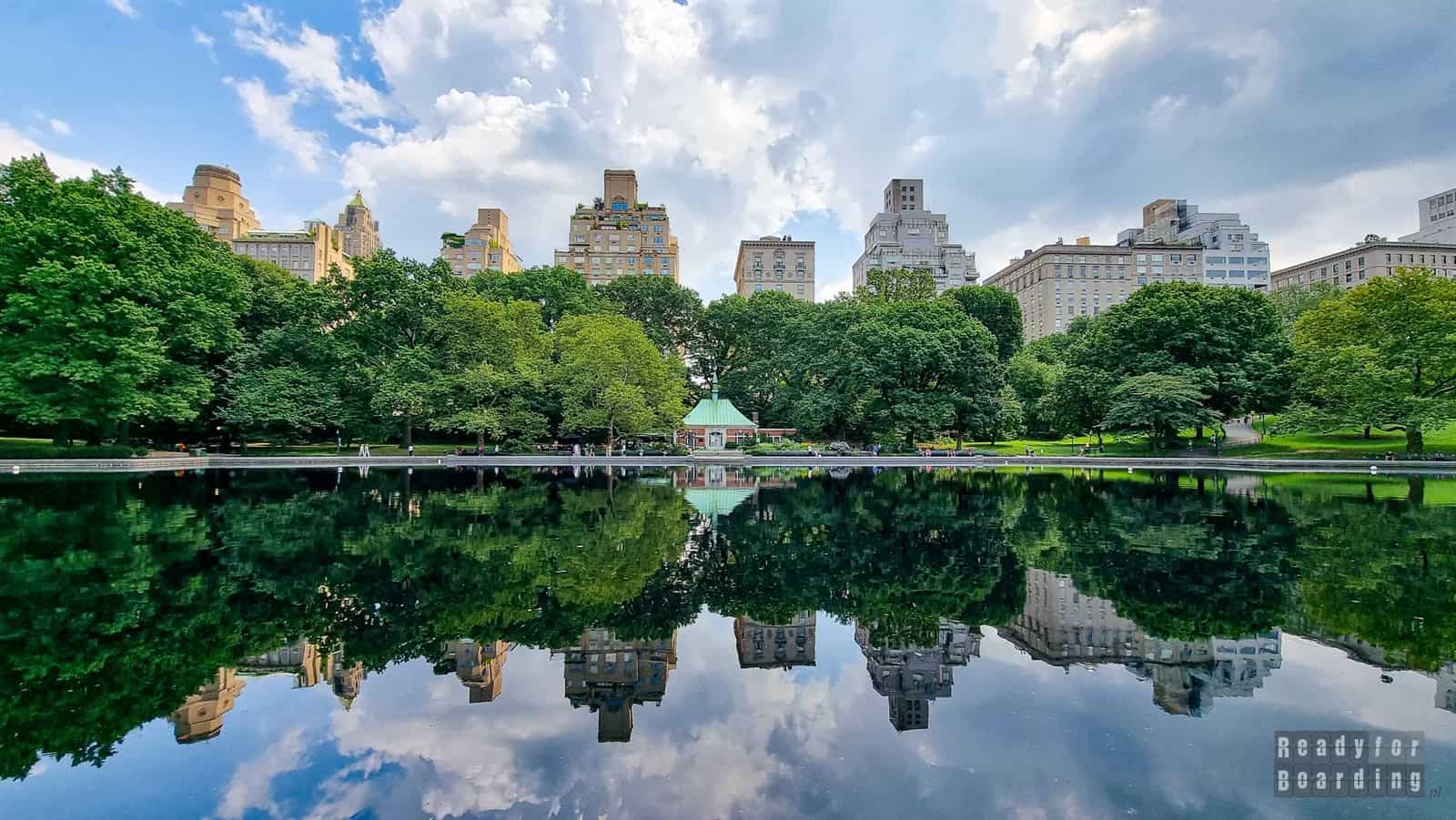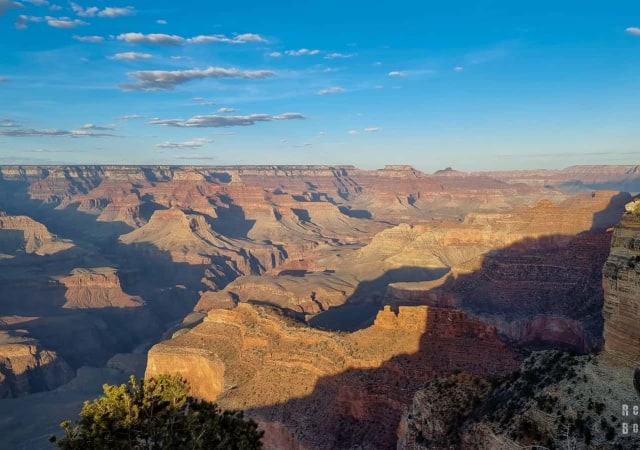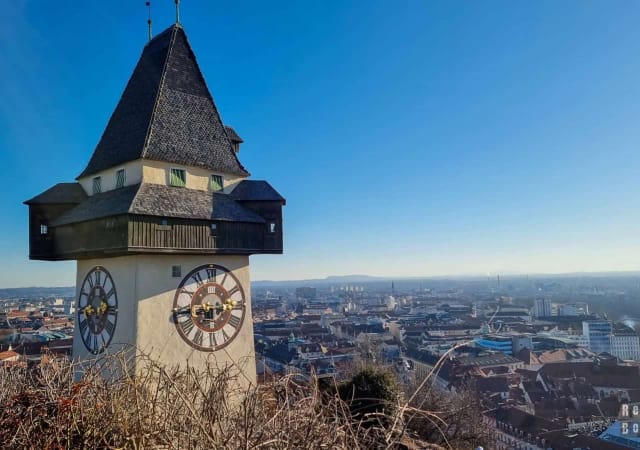We visited the Gdynia Aquarium (often referred to as the Oceanarium) on a January morning, and not just because the weather wasn’t cooperating. Children love to look at the colorful fish, they stand by the tanks as if mesmerized, as we have seen many times on our various trips. This time we checked out what the local Polish aquarium offers.
Most often we go to the Polish sea…. In winter. For several years now, we’ve been spending at least one winter weekend at the Baltic Sea, usually in the Tri-City, because we have the easiest access here, and also in bad weather and out of season there are still a lot of interesting places and restaurants to see and try.
Last weekend we went to the sea again, again to the Tri-City, hoping that the weather would allow for walks on the beach and in the surrounding parks. We also decided to take a look at the “Oceanarium” in Gdynia, so highly recommended for families with children.
We knew that after the aquarium in Singapore on Sentosa or Dubai, few aquariums would make much of an impression on us, so our expectations were not too high either. Just such an attraction, mainly for Olive, because after all, you can look at the colorful fish in the water for hours.
So what impression did the Aquarium make on us?
Table of contents
Tour of the Gdynia Aquarium
The first impression immediately after crossing the threshold of the building is: cramped! Just outside the door are the gates, and here you still have to stand in a small space in the checkout line, and it’s already getting crowded. Probably in summer it is better solved because the checkout windows are outside, so you approach the gates right away with the ticket in hand. The locker room is also quite cramped, but it’s not worth getting discouraged, and once you leave it and go to the different parts of the building, it gets decidedly looser and quieter. Of course, you have to keep in mind that we were in January, so there were only a few people in the halls. We know from other people’s opinions that it is definitely more crowded in high season.
And there are several “exposures” here and they are located on 3 floors. At the entrance we were informed that the tour starts from floor one, but it doesn’t really matter which part you start from.
The aquarium is divided into seven sections, each representing a different area and perspective. You can see that some are newer, renovated, and some are older, in need of refreshing, the arrangements are different and also not everywhere there are, for example, English subtitles.
The tour begins with the Zostera Room, where a small stingray can be found in a small aquarium, among the grasses and sands. In the other tanks, you can watch organisms that live in the Puck Bay.
Much more interesting, however, is the room on the other side – the Coral Reef, where you can admire the largest living coral reef in Poland. This is perhaps the most colorful and interesting part of the aquarium for the little ones – many colorful creatures hiding in even more colorful and fascinating reefs. Here you can see clownfish, blowfish, seahorses, fiddlers, jellyfish and even small sharks.
Interesting is the section titled At the interface of water and land, where you can see turtles, crocodiles and the most interesting: Mexican axolotls! Ha, we ourselves were surprised how interested we were…. Go, read and see for yourself :)
Also be sure to go up to the top floor, to the Baltic Room – a giant model showing the topography of the Baltic Sea awaits you here. In addition, there was no shortage of space here to address environmental topics as well. Also of interest is a more museum-like room, where you can see mock-ups, animal skeletons and learn many interesting facts about aquatic creatures.
Unfortunately, it is fair to say that the tanks here are too small, especially for these larger animals. We felt most sorry for the crocodile and the turtle, which had really little room…. Plus visitors who don’t understand what it means – not to knock on the glass. What the heck, I’ll pop, maybe he’ll smile for a photo. – It’s not the children, it’s the adults who behave this way.
We were also surprised to find that several tanks were open from the top, not secured with anything, and children can easily put their fingers in there, not to mention throwing various things….
Practically
Prices and opening hours
The Gdynia Aquarium is open during the winter season (i.e., October through March) from 10:00 am to 5:00 pm, with the last entrance at 4:30 pm.
In summer, the hours are already different: April and May – 9:00-19:00, June and September – 9:00-20:00, July and August – 9:00-21:00. The ticket offices always close half an hour before the Aquarium closes.
Prices also depend on the season. From May to August: PLN 28 – regular ticket, PLN 19 – concessionary ticket. From September to April: PLN 25 – normal ticket, PLN 19 – reduced ticket. Children under 4 years of age enter for free, and a discounted ticket is available to students under 26, pensioners.
If you plan to enter with at least one child over the age of 4, it will work out cheaper to buy a family ticket: May to August: 59 zlotys – 2+1, 69 zlotys – 2+2, 79 zlotys – 2+3 or from September to April: 56 zlotys – 2+1, 64 zlotys – 2+2, 72 zlotys – 2+3.
Audio guide
On the second floor, by the elevators, you can rent an audio guide. It is available in three languages, in two versions: for adults and for children. Adults can listen to the voice of Krystyna Czubówna, while younger children can explore the halls of the aquarium while listening to fairy tales and various tasks.
The cost of the rental is PLN 2.
Families with children
It is possible to move around the entire facility with a stroller. An interesting feature is the possibility to rent a stroller for free, which to us reminded us of the strollers available at the airport or in markets :) At first we were skeptical, but Olive really liked them.
Changing tables are available in the bathrooms.
Summary
Is the Gdynia Aquarium worth a look? Yes, especially if you are traveling with children. It is an interesting place that can interest both young and old.
Of course, it can’t match the more famous attractions of its kind in the world, but let’s not kid ourselves – that’s not the point! Here it is quieter, more intimate and, above all, local. We get to know the marine animals that inhabit the Baltic Sea, learn about its topography and major problems. Probably no other place is such a mine of knowledge about our sea.
If you are in and around the Tri-City and are looking for similar attractions, we also recommend you our text about Ocean Park in Wladyslawow.
>> See what else there is to do in Gdansk, Tri-City and surrounding areas.

